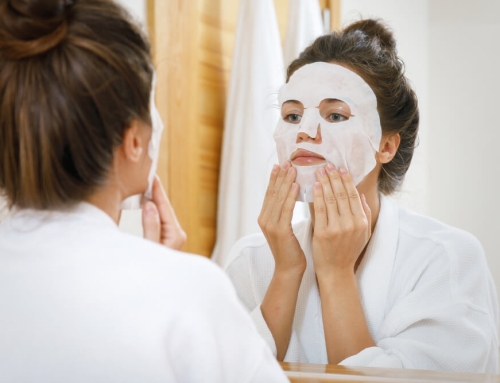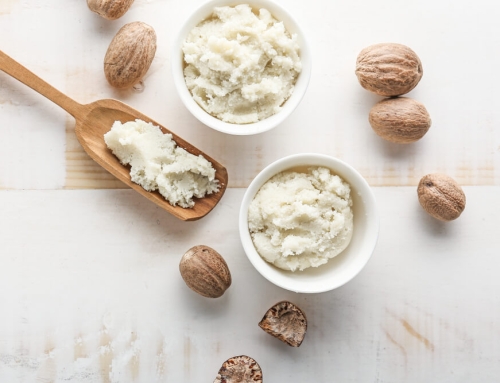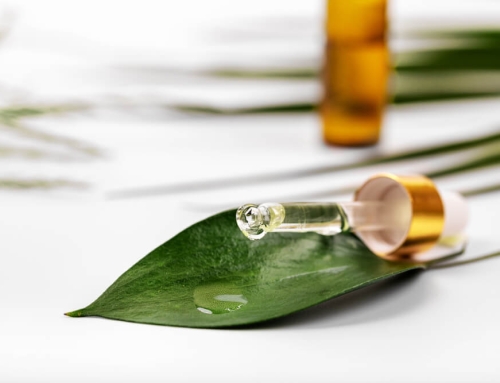Fall brings with it an abundance of fresh foods, and while you may already be eating seasonally, are you also using seasonal ingredients on your skin?
Fall ingredients contain the nutrients your body needs to carry it through the winter, and the same applies to your skin too. Here are 12 fall ingredients that your skin will absolutely love.
Grape
Fall is the season for harvesting grapes, an ingredient that truly has some superpowers when it comes to the skin. While the flesh of grapes may be the tastiest part of the fruit, the seeds and the skins are what you need for your complexion.
Grapes are packed with antioxidants, with one of the most powerful being resveratrol. What sets this antioxidant apart from the many others out there is the way in which resveratrol can reverse environmental skin damage, even damage that has been caused by the sun’s UV rays.
Since 90% of visible skin aging is caused by the sun, which is also responsible for skin cancers, being able to reverse this damage is a huge game-changer.
You can either purchase a product that contains grape seed extract or pure resveratrol, like the 24K Termica HD Solution. Both options will treat your skin to the many benefits of grapes.
Pumpkin
Pumpkins are synonymous with fall. While you may be indulging in your fill of pumpkin pies and enjoying some good old-fashioned pumpkin carving, don’t forget that your skin would benefit from a little pumpkin too.
This is another ingredient that helps to counter sun damage, while also providing the skin with some potent vitamins, including:
- Vitamin A
- Vitamin C
- Vitamin E
However, one unique feature that pumpkins boast are their natural enzymes. When applied topically, these enzymes break down the dead skin cells that sit on the surface of the skin, making them fantastic for exfoliation. If you want to give this a try yourself, look for an exfoliant made from fruit enzymes – chances are, the formula will also contain papaya extract, since this has a similar effect to pumpkin.
Calendula
The beautiful oranges and yellows of calendula flowers brighten up gardens in the late summer and fall. Since this is a cool-weather plant, it really comes into its own once the temperatures start to drop, meaning that all of those natural oils and potent compounds will be at their best.
You’ve probably seen calendula in several skin care products before, and that’s because this ingredient is known for:
- Its antifungal, antibacterial, antiseptic, and anti-inflammatory properties
- Its wound-healing effects
- Its soothing qualities
In the short-term, calendula plumps and brightens, while, in the long run, it helps to support and maintain the protein fibers in your skin, giving you a smoother and tighter complexion. For best results, look for a moisturizer formula that contains calendula extract.
Carrot
Unlike calendula, you probably haven’t seen carrot in many skin care products. It’s usually either carrot oil or carrot root extract that is utilized, with this ingredient packed with the same beta-carotene that whole carrots are known for. Once in the skin, the beta-carotene is converted into vitamin A, which is a key player when it comes to skin cell regeneration.
If that wasn’t enough, carrots are also a great source of vitamin C, which is an ingredient that everyone should be using.
Apple
Apples are everywhere in the fall, and while apple pie and apple crumble may be your usual go-to’s, apples contain a compound that can work wonders on the skin too…
Apples, as well as pears, which are another seasonal ingredient, contain a natural alpha hydroxy acid called mandelic acid. If you know your AHAs, then this is an ingredient that you will be familiar with.
Mandelic acid is a great ingredient to have in an exfoliant because of the way in which it:
- Clears away dead skin cells
- Reduces inflammation
- Unclogs pores
- Regulates sebum production
- Speeds up skin cell turnover
It’s also very gentle compared to some of the other AHAs available, making it a top choice for every skin type. If you haven’t given this fruity ingredient a try yet, look into the OROGOLD 24K Multi-Vitamin Deep Peeling + Mandelic Acid. A contains a number of other beneficial ingredients too and will brighten up the appearance of your skin in no time.
Guava
There are a couple of parts of the world where guavas are harvested year-round, but, for other climates, the winter crop of guavas is usually available around this time of year.
While the fruit itself may be delicious, and packed with so many different vitamins and antioxidants, it’s guava leaf extract that you will usually find in skin care formulations.
Why?
Because research shows that when applied directly to the skin, guava leaf extract is able to destroy acne-causing bacteria. This makes it capable of both treating and preventing acne breakouts.
Add to this the fact that the extract also boasts anti-inflammatory and antimicrobial properties and you have yourself a superstar ingredient for dealing with acne.
Walnut
Walnuts are in season throughout the fall, and there are countless studies out there proving just how beneficial walnuts can be for a person’s health. The nuts themselves are a fantastic source of omega-3 fatty acids and antioxidants, which is why walnut oil is such a great ingredient for moisturizing the skin.
However, walnuts have another use too…
Walnut shells have caused quite a bit of controversy lately. They are an ingredient that have long since been used as a physical exfoliant, but they can end up doing more harm than good. This is down to the shell particles, which are full of sharp and rough edges that end up creating tiny micro-tears in the skin, slowly damaging the skin’s natural protective barrier.
This is why it’s so important to ensure that the skin care you are using comes from a brand that cares about quality. When finely ground down to powder-form and then polished to ensure a smooth and even consistency, walnut shells can actually be extremely beneficial. They gently scrub away dead skin cells and excess sebum, leaving the skin looking brighter and fresher.
Pomegranate
Pomegranates come into season in the fall, with this continuing well into the winter in some climates. This is a fruit that has become increasingly popular in skin care, due to the number of studies emerging that point to how beneficial this ingredient can be.
While it can be safely used by all skin types, pomegranate is especially loved by those who have oily skin. It helps to decongest and detoxify the skin, while also reducing inflammation, all of which work together to prevent breakouts. It’s great for hydrating too, thanks to its punicic acid content. This omega-5 fatty acid increases skin moisture levels immediately after use, giving pomegranate its reputation of being a skin miracle worker.
Rosehip
The sweet scented rose flowers of the summer are soon replaced by rosehips, the large fruit that forms after the flower has died back. Although rosehips haven’t really taken off in popularity as a food, even though they are edible, this is an ingredient that is frequently used in cosmetics.
Rosehips are actually the richest source of vitamin C available – they contain 50% more vitamin C than oranges! With vitamin C being one of the most beneficial vitamins for all skin types, rosehips offer up a great natural source.
Rosehip oil is also incredibly hydrating, making it a must-have for those with dry skin. To treat your skin to the power of rose, take a look at the 24K Rose Gold Collection. Rosehip seed extract is the star ingredient in each product, and you’ll find many other seasonal ingredients, from olive to soybean, making an appearance too.
Mushroom
Whether you forage for your own, shop for seasonal mushrooms, or prefer to enjoy a freshly-cooked wild mushroom selection at your favorite restaurant, fall is when mushrooms are at their freshest.
Mushrooms have been in the limelight quite a bit recently, largely due to the many health benefits that they have. There are thousands of different mushrooms out there, and each one works in its own way when it comes to both the body and the skin:
- Shiitake – a popular culinary ingredient, shiitake mushrooms are packed with kojic acid. This ingredient is often used as a natural alternative to hydroquinone for lightening and brightening skin pigmentation
- Cordyceps – difficult to cultivate and so usually pricier than other mushrooms, cordyceps are bursting with numerous anti-aging compounds
- Tremella – a must-have for those with dry skin, since tremella mushrooms can hold up to 500 times their weight in water. Since its molecules are absolutely tiny, they easily penetrate through the skin, sharing their water content with skin cells
- Reishi – the oldest of the herbal mushrooms, reishi mushrooms are a great source of beta-glucans. These are natural sugars that soothe dryness and itching
- Chaga – a natural source of melanin, which is the same compound that gives your skin its color and protects your skin from sun damage
Soybean
Soybeans are usually harvested mid to late fall. In addition to being a staple ingredient in many international cuisines, soybeans are also becoming increasingly common in skin care products.
Why?
Largely due to its protein content, which is also why it’s featured so heavily in the kitchen. Your skin is made up of proteins, namely collagen and elastin, and these are responsible for giving your skin its smoothness and firmness. Sadly, these proteins decline with age, which is when ingredients such as soybean can come to the rescue…
By supporting your skin’s natural proteins, soybean can have a powerful anti-aging effect. It can also adjust hormonal levels within your body, simply from being absorbed by the skin, which can help to rejuvenate a tired and dull complexion.
Studies have also found that soy skin care can have a noticeable anti-inflammatory effect, while repairing DNA mutations in skin cells. Again, this helps to keep the skin looking fresh and youthful.
The best way to make use of soybean is in its oil form, as this enables the ingredient to retain its most powerful properties. Moisturizers containing the oil are ideal, especially when combined with other anti-aging and hydrating ingredients. This is what you’ll find in the 24K Nano Day Recovery.
Cranberry
While most commonly associated with the festive period, cranberry extract and cranberry seed oil have also slowly been making its way into skin care formulations. Considered to be a superfood, cranberries are packed with a wide range of vitamins and nutrients that other foods are often lacking, such as:
- Vitamin C
- Vitamin E
- Vitamin K
- Manganese
- Essential fatty acids
Cranberries also happen to have the only oil with the perfect omega-3:omega-6:omega-9 ratio. This means that the skin absorbs it and makes use of it quickly and naturally, allowing the compounds within the oil to penetrate deeper than other ingredients do. Those same fatty acids also enable the oil to intensely hydrate the skin, immediately giving it a plumper and softer appearance.
If you deal with acne, you’ll be happy to know that cranberries are a natural source of salicylic acid. This is a popular anti-acne ingredient because of the way in which it clears out the pores and regulates sebum production, both of which help with breakouts. This makes cranberry a good botanical to look for in anti-acne skin care products.
A Double Dose of Seasonal Goodness
Each of the ingredients listed above can really work wonders on the skin, especially if you incorporate several of them into your skin care regime. However, as important as topical skin care products may be, don’t forget that you should also be nourishing your skin from within…
Eating healthy, seasonal foods will have just as much of an impact on your skin as using them topically, if not more. Try to add as many of the above foods into your diet as possible while they are in season. This will ensure that even those skin cells that lie deep within your skin, which cannot be reached by topical products, are able to receive all of the nutrients they need.










